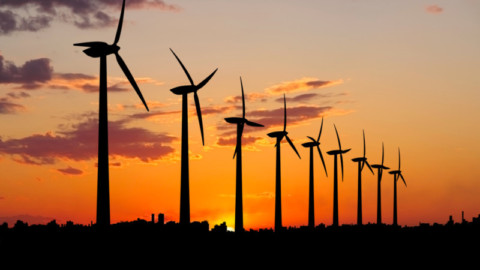The Clean Energy Council’s latest report has found that the renewables sector could potentially employ 44,000 Australians by 2025, with the majority of these jobs in regional areas.
The Clean Energy At Work report is Australia’s largest study of current and projected employment in the renewable energy sector to date.
The report found the sector currently employs over 25,000 people – a number which could almost double within five years.
Released by the Clean Energy Council, the study follows research by the Institute for Sustainable Futures and the University of Technology Sydney, and covers large-scale and small-scale solar and battery storage, wind, hydro and pumped hydro and the associated supply chains.
Clean Energy Council Chief Executive, Kane Thornton, said Clean Energy At Work shows the enormous job creation opportunities from renewable energy in Australia.
“It’s clear that these renewable energy jobs can have an enormous positive impact on regional communities and should be a clear priority for government as part of the COVID-19 economic response,” Mr Thornton said.
Significantly, the release of Clean Energy At Work highlights the role of renewables in creating a prosperous rural and regional Australia, with around 70 per cent of renewable energy jobs in rural and regional areas to 2035.
“It’s been recognised for some time now that Australia has developed a two-speed economy that has been detrimental to those living in regional and rural areas,” Mr Thornton said.
“It’s vital that there is a focus on creating job opportunities outside our metropolitan centres and clean energy can deliver, allowing all Australians to benefit.”
The renewable energy sector has been through recent and rapid growth with the last three years setting several new records, including the highest penetration of rooftop solar, the most added capacity for wind and large-scale solar power, and largest financial investment in the sector.
According to Mr Thornton, it is therefore a crucial time to take stock of industry and workforce needs and undertake critical skills forecasting to understand whether training systems can address potential skills shortages.
While construction and installation jobs currently dominate the renewable energy labour market comprising 80 per cent of current jobs, Clean Energy At Work reveals that by 2035 as the industry grows in scale as many as half the jobs could be in operation and maintenance, especially in the wind sector, which means they are essentially permanent roles.
“These have the potential to be ongoing, highly skilled and stable – avoiding the boom and bust of construction cycles,” Mr Thornton said.
“The Clean Energy Council has a strong focus on raising standards for workers and communities and maintaining integrity within the industry while accelerating the uptake of clean energy.
“The next step is about minimising skills shortages and creating secure, ongoing and sustainable jobs in the industry. We haven’t always got this right. However, this is something we’re now working with our members and stakeholders to address.”
Mr Thornton said the role of government was essential in establishing a robust and secure renewable energy workforce. Without addressing the barriers and ensuring a strong policy landscape in support of the renewables industry, 11,000 jobs could be lost over the next decade.
“This is the scenario we want to avoid. It’s vital that the investment pipeline can give the renewables business the confidence to invest in the development of solid workforce and training practices,” he said.
Meeting with industry to discuss a clean future
On 1 June, the Clean Energy Council hosted a closed-door roundtable with key stakeholders for in-depth discussions on how to progress employment challenges in the renewables industry.
The Australian Council of Trade Unions (ACTU) was one of the organisations to participate in the roundtable, as part of an emerging conversation that has begun between the renewable energy industry and unions to ensure the industry grows on a foundation of secure jobs with good conditions into the future.
ACTU President, Michele O’Neil, welcomed the Clean Energy At Work report as well as the responsiveness shown by the Clean Energy Council to work through known employment and skills issues in the industry.
“Australian unions understand the urgent need to move to net-zero emissions. Renewable energy is and will continue to be one of the largest contributors to reducing emissions,” Ms O’Neil said.
“It is really important that the industry is built on solid foundations and good quality jobs. That hasn’t always been the case in the past, with some parts of the industry (like many other industries) relying on workers on short-term and precarious contracts.
“Unions welcome the opportunity now to work with the renewables industry to build a clean energy pipeline of secure, skilled and well-paid jobs with good conditions which will deliver enormous benefits for workers and communities across the country while tackling climate change.”
The full Clean Energy At Work report can be found here.


















